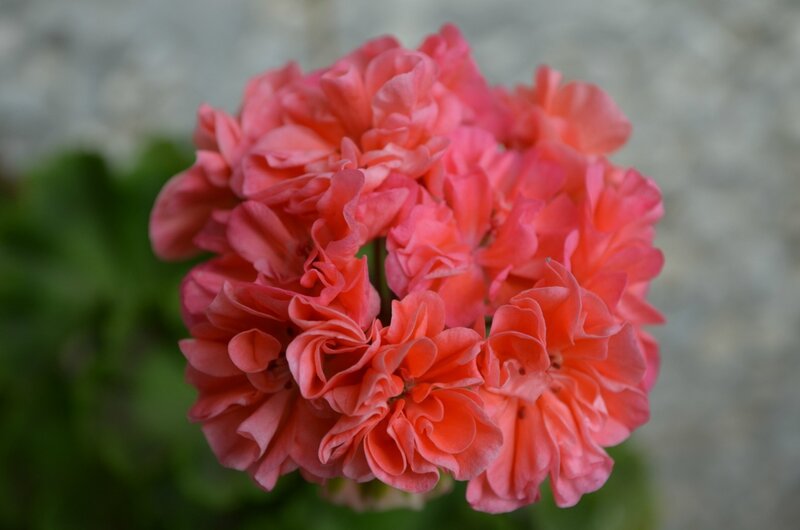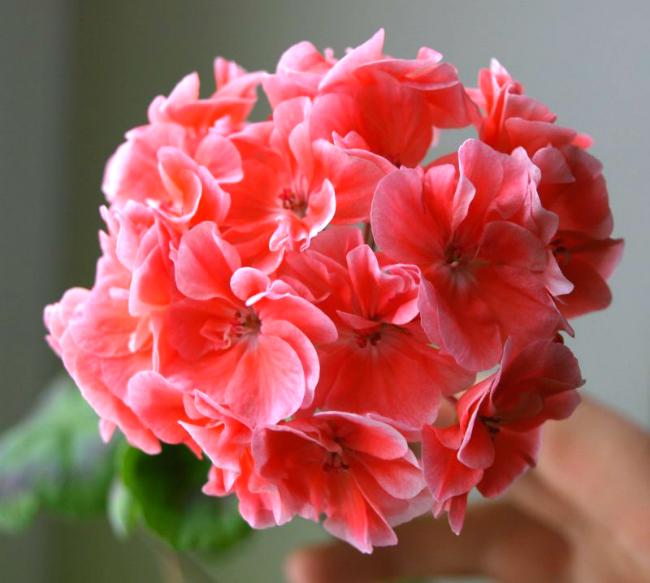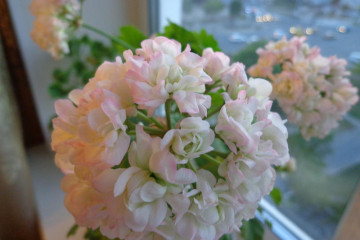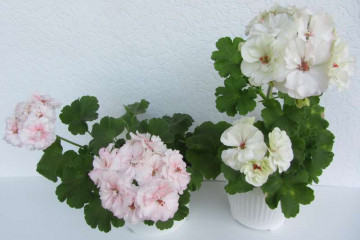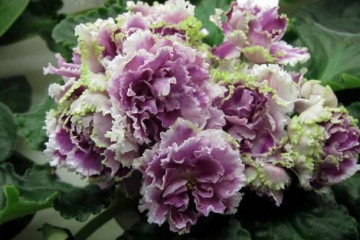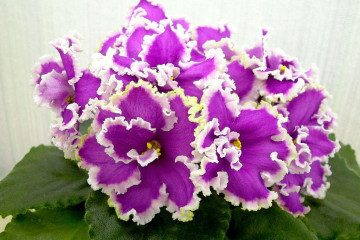Pelargonium Lake - characteristics of the variety and cultivation
Content:
One of the favorite geranium varieties of gardeners, Lake Pelargonium, is distinguished by a juicy rich orange color of large inflorescences. Will be a real decoration for any flower arrangement.
Description of the variety
Pelargonium Lake is a flowering plant. The bush is compact, with few leaves, but lush flowering. The color of the leaf plate is deep green, with a black edging, due to which decorativeness increases. Inflorescences are large, salmon-colored.
It can be grown in pots on the balcony, then the height of the bush will not exceed 60 cm, or in open ground, in which case the plant will strive up a little more. However, in any case, it does not exceed 1.2 meters.
It is important to remember that pinching is necessary for the flower, otherwise pelargonium will grow upward, which is why it will lose its decorative effect and become like a stick.
The variety belongs to the dwarf zonal, suitable for home flower gardens, greenhouses, winter gardens.
Planting Pelargonium Lake
Lake - Pelargonium is unpretentious, but it is important to choose optimal conditions for the plant.
Choosing a place and a pot
Like all domestic geraniums, Lake prefers bright areas on the south side. However, it is very important to protect the “green pet” from direct UV rays by lightly shading with tulle. Draft is unacceptable, but culture loves fresh air, so constant ventilation must be provided.
The pot should be chosen based on the size of the bush, taking into account the fact that this geranium does not like "relocation". Models of a rounded shape up to 15 cm in diameter and up to 20-30 cm high look beautiful. But these sizes are relevant for an adult plant. For planting a cutting, you can choose a regular plastic cup.

A very beautiful plant will certainly respond to competent care and will thank the grower with stunning inflorescence caps
Priming
A drainage layer is required, for example, from gravel, expanded clay, vermiculite. It will help prevent root rot. The soil can be bought ready-made for geraniums. Or mix it yourself from turf, humus and coarse river sand.
Follow-up care
In order for Pelargonium Lake to please with elegant flowering, it is important to surround the flower with competent regular care.
Temperature regime
Pelargoniums (pelargonium) came from the hot climate of the South American mainland. That is why they need the right temperature.
In the summer it should be +23 .. + 28 degrees, during the rest period (autumn, winter, early spring) - +12 .. + 15 degrees.
Watering and spraying, moisture level
The plant is hygrophilous, the soil is irrigated when the earthen coma dries up. Spraying is not required, but some growers use a spray bottle as a way to destroy dust.
To maintain a comfortable level of humidity, you can put a container of water next to the flower.
Loosening
After each watering, the soil should be carefully loosened to provide oxygen to the roots. This is done carefully, since pelargonium has a superficial root system.
Top dressing
Fertilize the soil for pelargonium Lake should be in the period from March to September. At the same time, ready-made mineral complexes for flowering are used.
During the flowering period, they are fed with potash fertilizers, without using nitrogen-containing ones - they cause rapid foliage growth to the detriment of budding.
Pruning
It is imperative to pinch the top, otherwise the bush will stretch up strongly, becoming like a "stick". Forms lateral shoots on its own poorly.
Pruning is carried out before the formation of a flower bud.
Reproduction
When describing Lake Pelargonium, it should be noted that reproduction is possible in various ways. Seed is rarely chosen because of its laboriousness, duration and lack of guarantee of preservation of varietal characteristics.
The most popular ones are cuttings and rooting of a leaf; they will help to preserve all the specifics and are quite simple to implement.
Dividing the bush - a method practiced by experienced gardeners, involves dividing the mother plant overgrown into separate branches and transplanting each of them into a separate container.
How to transplant
The method of transplanting is transshipment with the preservation of an earthen coma. A drainage layer is placed in a prepared pot, then a soil mixture. Then the plant is carefully removed from the old pot, moved to a new one and sprinkled with soil. There is no need to tamp, the first watering is carried out no earlier than 3-4 days later.
Possible growing problems, pests
Competent care is a guarantee that there will be no special difficulties. However, the florist needs to be prepared for anything. The main problems associated with Pelargonium Lake:
- Yellowed leaves indicate that the plant needs to be fed.
- Reddish plates signal that the pelargonium is cold.
- Overuse of nitrogenous fertilizers can negate flowering.
- Dry buds are often associated with flooding.
The main pests: aphids, whiteflies. They are harvested by hand with subsequent destruction, or treated with a fungicide.
Such is the stunningly beautifully elegant Lake Pelargonium - a plant that is ready to become a favorite of any grower due to its decorativeness and unpretentiousness.
